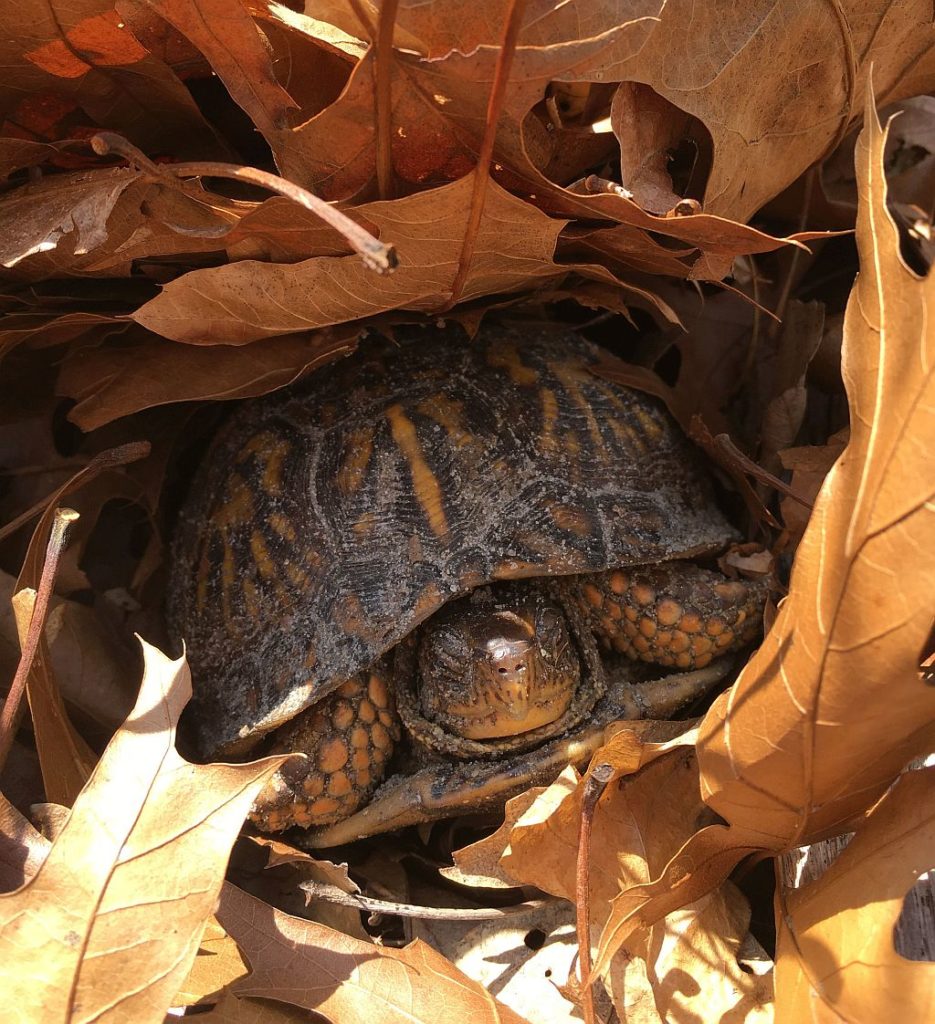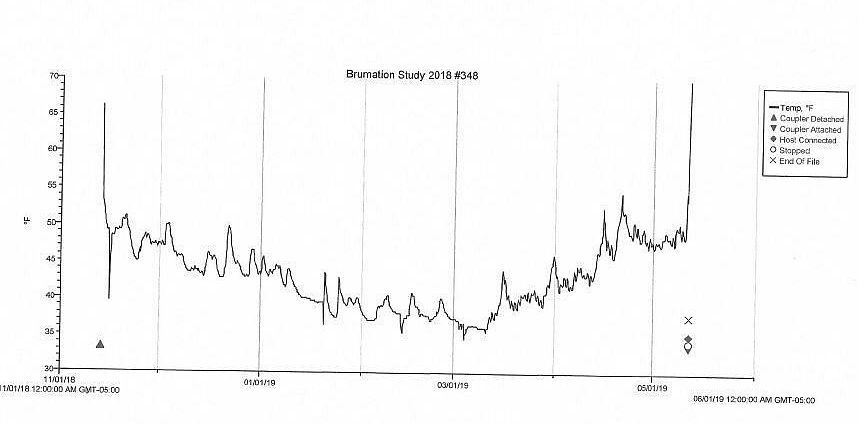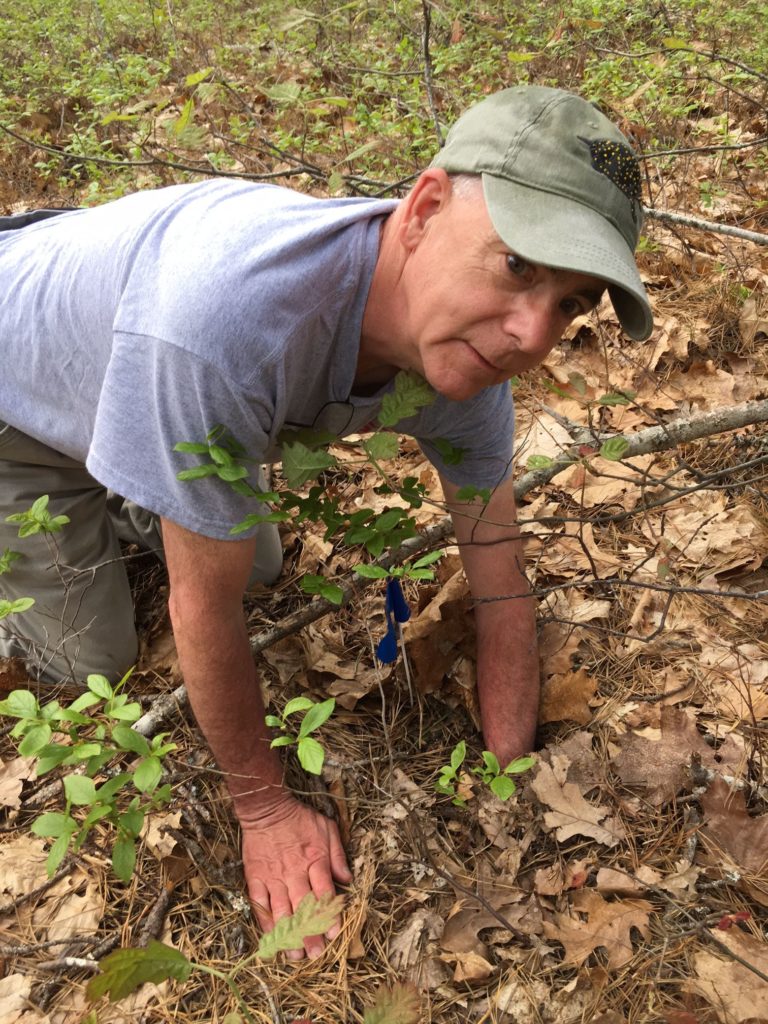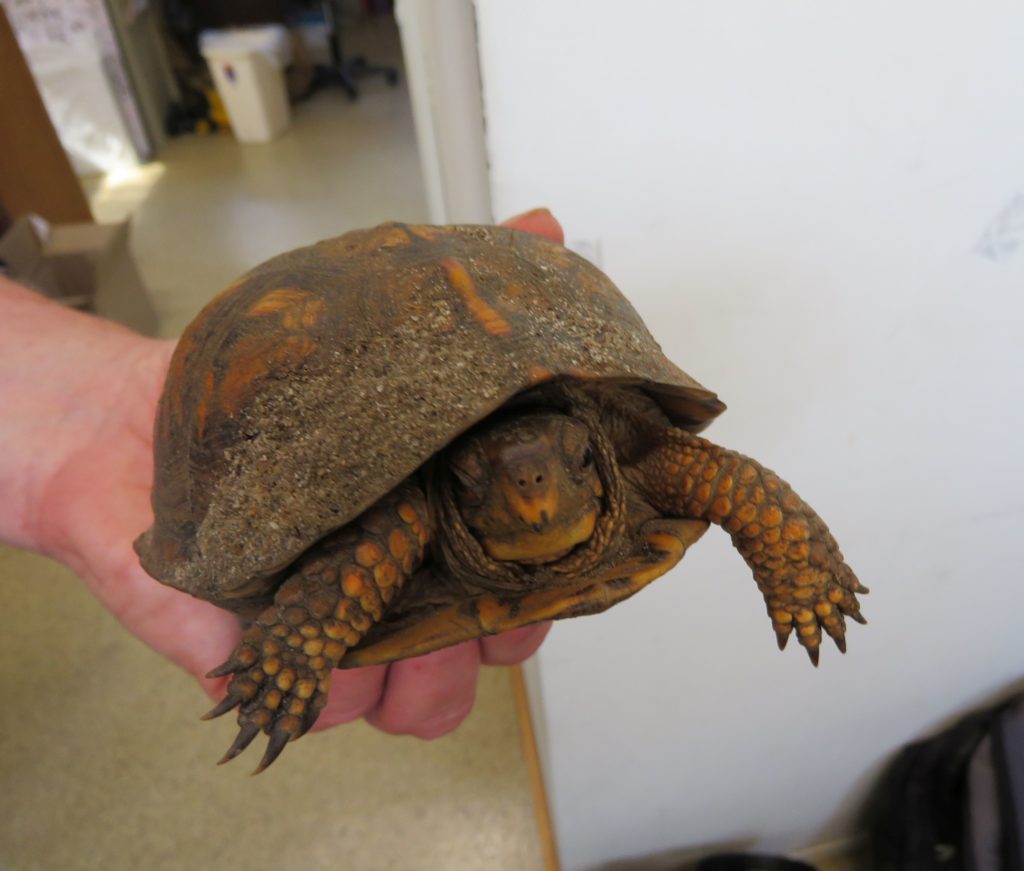The following post was contributed by turtle aficionado and volunteer Tim O’Brien who’s been studying the sanctuary’s box turtles for the past few years.
For the last two winters I have been studying the brumation ( reptile hibernation) habits of the sanctuary’s Eastern Box Turtle (Terrapene carolina) population to get a better understanding of the environmental cues that trigger emergence from the turtle’s long winter snooze. Identifying these cues could improve our conservation efforts by limiting potential aboveground turtle mortality in the spring.
Box turtles avoid the stressful winter temperatures by burying themselves in soft soil or detritus and remaining dormant. Using radio transmitters and temperature data loggers, I followed the turtles into brumation and recorded their behavior within their burrows.

Last year I studied two turtles and followed each into brumation using the transmitters. Once a turtle was in its burrow, I placed a temperature data logger directly adjacent to the carapace. Using the data from this device, I noted that each turtle emerged in the spring when the soil temp in the burrow reached 50 degrees. This year I followed five turtles–4 females and one male–and again monitored them all winter long. Would this larger study group provide different results?
As for the start of brumation, most of our box turtles this year entered their burrows by November 1st. But one male– we call him #348– waited until November 18th. This variation in schedules is not unusual. One group of turtles will enter brumation on the early side in mid-October and typically emerge fairly early by mid-April. Other turtles, such as #348, enter brumation late and also emerge late, sometimes waiting until mid-May. Individual brumation periods are a life history strategy that helps to protect the population in the event of a sudden spring frost or other environmental event.
This past winter I checked the turtles every two weeks, noting depth and length of brumation burrow, position in the burrow, and any form of site disturbance from a predator (thankfully there were none). I had a data logger in with each turtle as well as one control logger positioned above on the surface at a central location at the sanctuary to record air temperature.

After the turtles emerged I removed the temp loggers from the burrows and downloaded their data. Our turtles averaged 175 days in brumation. The data loggers are set to take a temp reading every four hours, so that’s over a 1000 data points per turtle!

After crunching the data, here is what I learned. The lowest soil temperatures recorded (temps that the turtles were exposed to) in each burrow ranged from 31.8 degrees to 34.5 degrees for a mean average of 32.6 degrees. (Box turtles can withstand freezing temps for short periods of time in their burrows). The average soil temperature within the burrow for the duration of the study ranged from 39.8 degrees to 44 degrees for an average of 41.5 degrees. This is significant because the depth of the burrow ultimately determines the soil temperature that the turtles will be exposed to (soil temps are less harsh as the depth of the burrow increases).
I find it interesting that turtles who brumated at different depths and in divergent areas of the sanctuary were all exposed to a fairly narrow range of average soil temperatures. How do they know how deep to dig to avoid sustained freezing temperatures? This is yet another mystery waiting to be solved!

Emergence soil temperature ranged from 49 degrees to 54 degrees for an average of 51.1 degrees. So again, for the second year in a row and with a larger study group size, the turtles emerged when the temp of the ground around them in their burrows reached approximately 50 degrees. It’s important to note that a turtle may emerge over a period of days, lured outside initially by a sunny day and then temporarily sent back in the burrow by a chilly one.

What’s next? This year I have a different set of turtles on radio transmitters along with my two long-term study turtles. I’d like to attach button-type temperature loggers directly to the carapace of the turtles as they enter brumation this coming fall. Having the logger directly attached to the turtle will give me more precise temperature readings. The more we know about our box turtles, the better stewards we can be for them.



Love reading about your work with these turtles, a favorite of mine too. We have so much to learn about this world and it’s inhabitants. Thanks for all you do.